The dwarf pufferfish (Carinotetraodon travancoricus), also known as the pea pufferfish or Indian dwarf pufferfish, is a popular fish in the aquarium hobby due to its appearance and size.
As there are a few things to consider when keeping the dwarf pufferfish, we have decided to take a closer look at this interesting aquarium inhabitant in this article.

Home of the dwarf puffer fish
The dwarf pufferfish is native to the wetlands of Bangladesh, India and Sri Lanka. Unfortunately, the dwarf pufferfish is considered endangered in various distribution areas. The reasons for this include the destruction of habitats due to water pollution, the construction of dams, deforestation and the conversion of wetlands into plantations for local agriculture.
Unfortunately, the aquarium trade is also to blame for the decline in natural populations of dwarf puffer fish, as the removal of dwarf puffer fish from the wild for commercial purposes is also partly responsible.
In the natural habitat of the dwarf puffer fish, temperatures fluctuate greatly. Temperatures range from 25 °C to over 33 °C. The pH value in the natural habitat of the dwarf puffer fish is in the range of 6.5 to 7.0.

Dwarf puffer fish characteristics
The dwarf pufferfish remains relatively small at 2 to 4 cm and is therefore one of the smallest pufferfish species. The dwarf pufferfish is difficult to distinguish from its relative, the dwarf malabar pufferfish (Carinotetraodon imitator). Both pufferfish species have the same dark markings on the yellow background. However, the pattern of the dwarf pufferfish is a little denser. These two species can be definitively distinguished by the lack of a thick black line at the level of the lateral line organ, which begins below the dorsal fin and extends to the root of the caudal fin. This black line is missing in the dwarf malabar pufferfish.

The pygmy pufferfish aquarium
Although the dwarf pufferfish remains relatively small at 2 to 4 cm in size, a nano aquarium is not suitable for keeping this pufferfish.
We recommend an aquarium with an edge length of at least 60 cm for keeping a small group. An aquarium with an edge length of 80 cm would be even better.
The reason for this is that the males of the dwarf puffer fish form territories and therefore sufficient space is essential.
When setting up the aquarium, you should make sure that there is not too strong a current in the aquarium, as dwarf puffers avoid strong currents. A well-structured aquarium with sufficient plants and hiding places is also important. This allows the males to demarcate their territory. The more weedy the aquarium is, the more comfortable the dwarf puffers will feel in the aquarium.
The substrate does not necessarily have to be sand for the dwarf puffer fish. As the dwarf pufferfish does not burrow into the ground like many other pufferfish species.
You should ensure that the temperature is between 25 and 28 °C.
You should ensure that the pH value in the aquarium is between 6.5 and 7.0. The water itself should be soft to medium-hard. We recommend that you check the water values at regular intervals.
It is also important that you know that the dwarf pufferfish is a freshwater fish. You should therefore refrain from adding salts. We also advise against using stones for decoration, which harden the water in the aquarium.
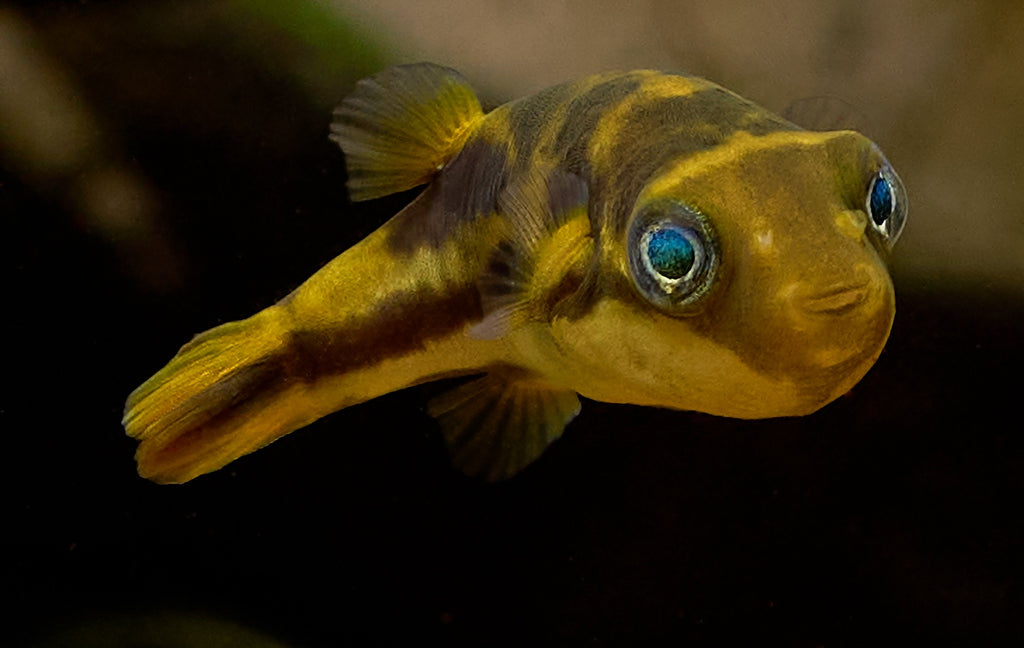
Combining dwarf puffer fish
The question often arises as to whether dwarf puffer fish can be kept together. We personally recommend a species aquarium. However, if you don't want to do this, there are a few points to consider when choosing the aquarium inhabitants
What we can say for sure is that of the many species of pufferfish, the dwarf pufferfish is best kept with other aquarium inhabitants. This is because its size and social behavior make it very different from other pufferfish species.
The dwarf pufferfish generally behaves quite peacefully towards other aquarium inhabitants. Provided it can find enough food in the form of snails in the aquarium. If this is not guaranteed, dwarf pufferfish can tend to eat the fins of other aquarium inhabitants. It is therefore important to ensure that you choose larger fish or fast tetras, for example, when socializing them.
We do not recommend socializing with small crayfish or shrimps. These are usually regarded as food by the dwarf puffer fish.
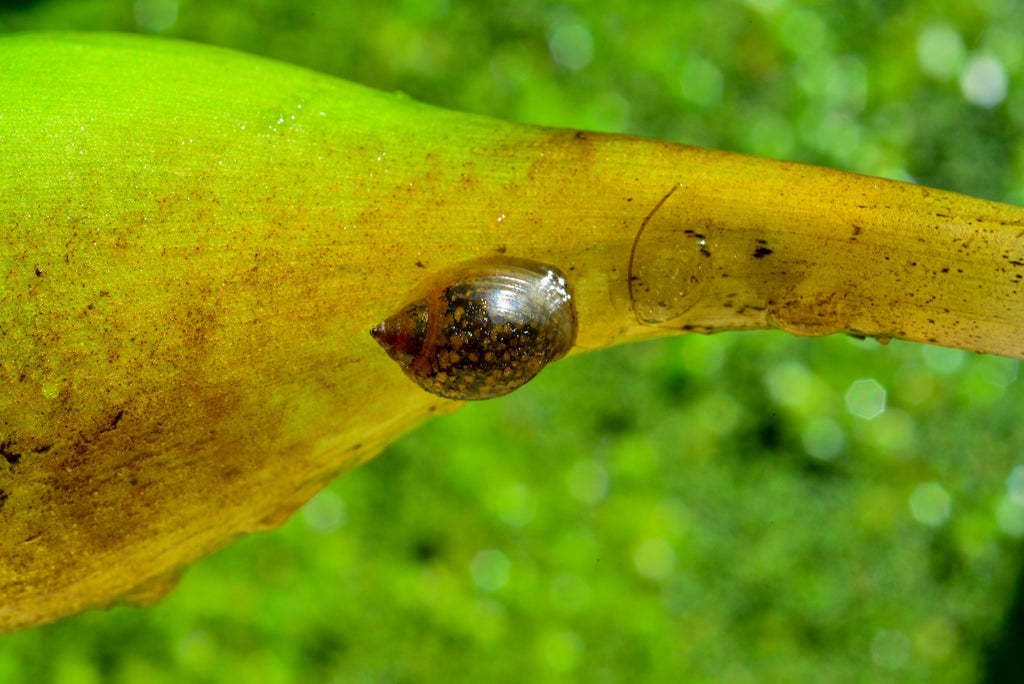
The diet of the dwarf puffer fish
Snails are one of the dwarf puffer fish's most important foods. You should therefore only keep dwarf pufferfish if you can provide them with a snail diet. In most cases, you will need to breed your own snails.
Dwarf puffer fish crack open the snail shells with their teeth. This is important so that the dwarf pufferfish's teeth can wear down. Otherwise, the teeth will continue to grow and eventually they will no longer be able to eat.
There are also dried food snails, but not all dwarf puffer fish can get used to these snails. The live feeding snails that are sometimes commercially available are also only suitable to a limited extent. The cost of these is simply too high when you consider that dwarf puffer fish are almost constantly feeding.
Dwarf pufferfish should also not be used to eliminate a snail infestation in the aquarium. This is because as soon as you have managed to eliminate the snail infestation with the dwarf puffer fish, you will be faced with a new problem of feeding the puffer fish.
We have explained how to get a snail infestation in the aquarium under control in this blog post.
Therefore, we would like to reiterate at this point that you should only keep dwarf puffer fish if you can ensure that they are fed by snails.
In addition to snails, you can also offer the dwarf puffer fish live food in the form of red mosquito larvae from time to time. However, as red mosquito larvae are very fatty, they should only be offered at irregular intervals, if at all. The main food of dwarf puffer fish is snails.
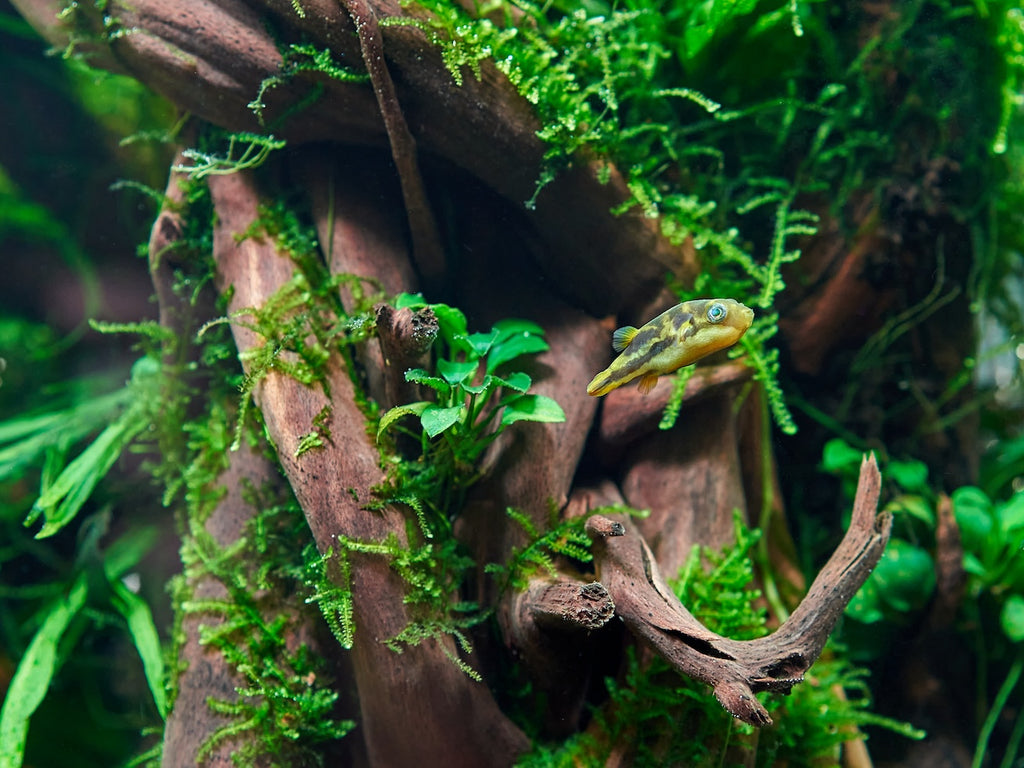
Dwarf puffer fish breeding
If certain conditions are met in the aquarium, breeding dwarf pufferfish can certainly work
First of all, of course, it must be ensured that a male and female are available. The male dwarf puffer fish are usually more strongly colored on the belly than the female dwarf puffer fish.
As soon as the male gets into the mating mood, the colors of the animal become even more intense.
In order for spawning to take place, it is important that you feed the animals generously in advance. In addition to snails, you should also offer live food in the form of mosquito larvae.
As soon as you notice that the female is even rounder than usual, you can slightly increase the temperature in the aquarium. By increasing the temperature in the aquarium, the male dwarf puffer fish will then get into the mating mood.
For a certain period of time, the male will "chase" the female around the aquarium. This is absolutely normal and is part of courtship. After a certain time, the female will give up and the two animals will mate.
The female usually lays very few eggs, so it is important that there is Java moss in the aquarium. This is because the dwarf puffer fish not only eat their own eggs, but also the hatched young.
If the female lays the eggs in the Java moss, you can then place the moss and the eggs in a separate aquarium.
After just a few days, the little dwarf puffer fish will hatch. As the newly hatched dwarf puffer fish are really very small, the animals must be fed with Artemia nauplii and or microworms during the first phase.
After approx. 4 to 5 weeks, the young dwarf puffer fish will also eat small snails.
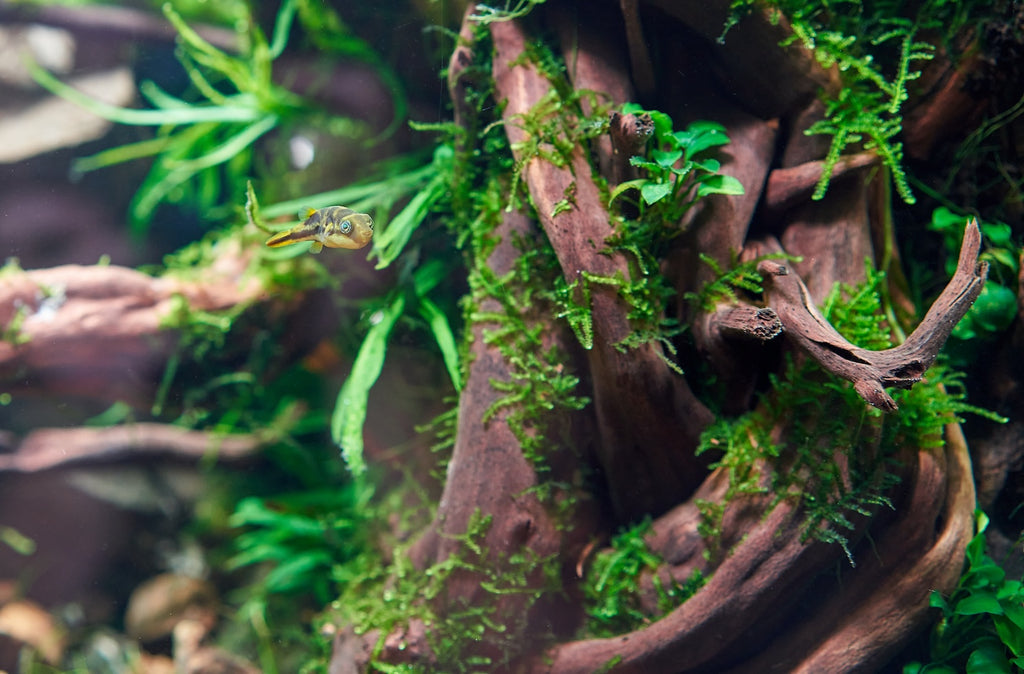
Frequently asked questions about the dwarf puffer fish
Is the dwarf pufferfish poisonous?
Yes, the dwarf pufferfish is poisonous like the other pufferfish species. However, this dwarf pufferfish poison is absolutely harmless to humans. If a dwarf pufferfish dies in your aquarium, remove it from the aquarium immediately, as with other fish.
How old does a dwarf puffer fish get?
Dwarf pufferfish live to be between 2 and 4 years old.
Can dwarf puffers inflate themselves?
Yes, dwarf puffers can also inflate during fights or stress. If you notice that your pufferfish has inflated, please leave it absolutely alone until the air has been released.
Can I keep a dwarf pufferfish on its own?
No, dwarf puffers are group animals and should therefore be kept in a group of at least 5 animals.
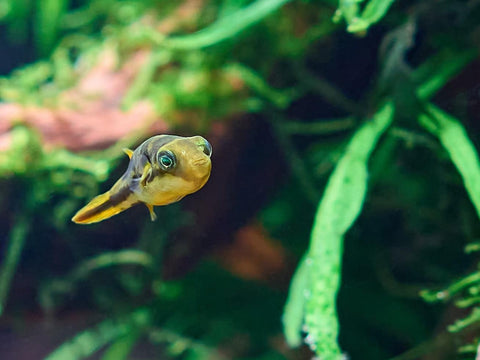
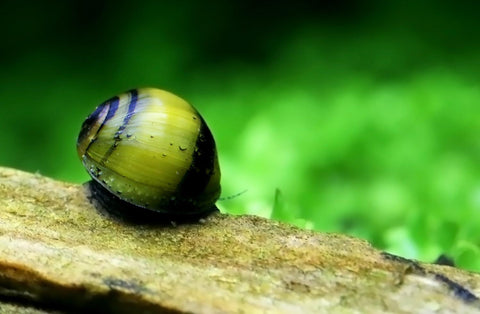


Comments (0)
There are no comments for this article. Be the first one to leave a message!